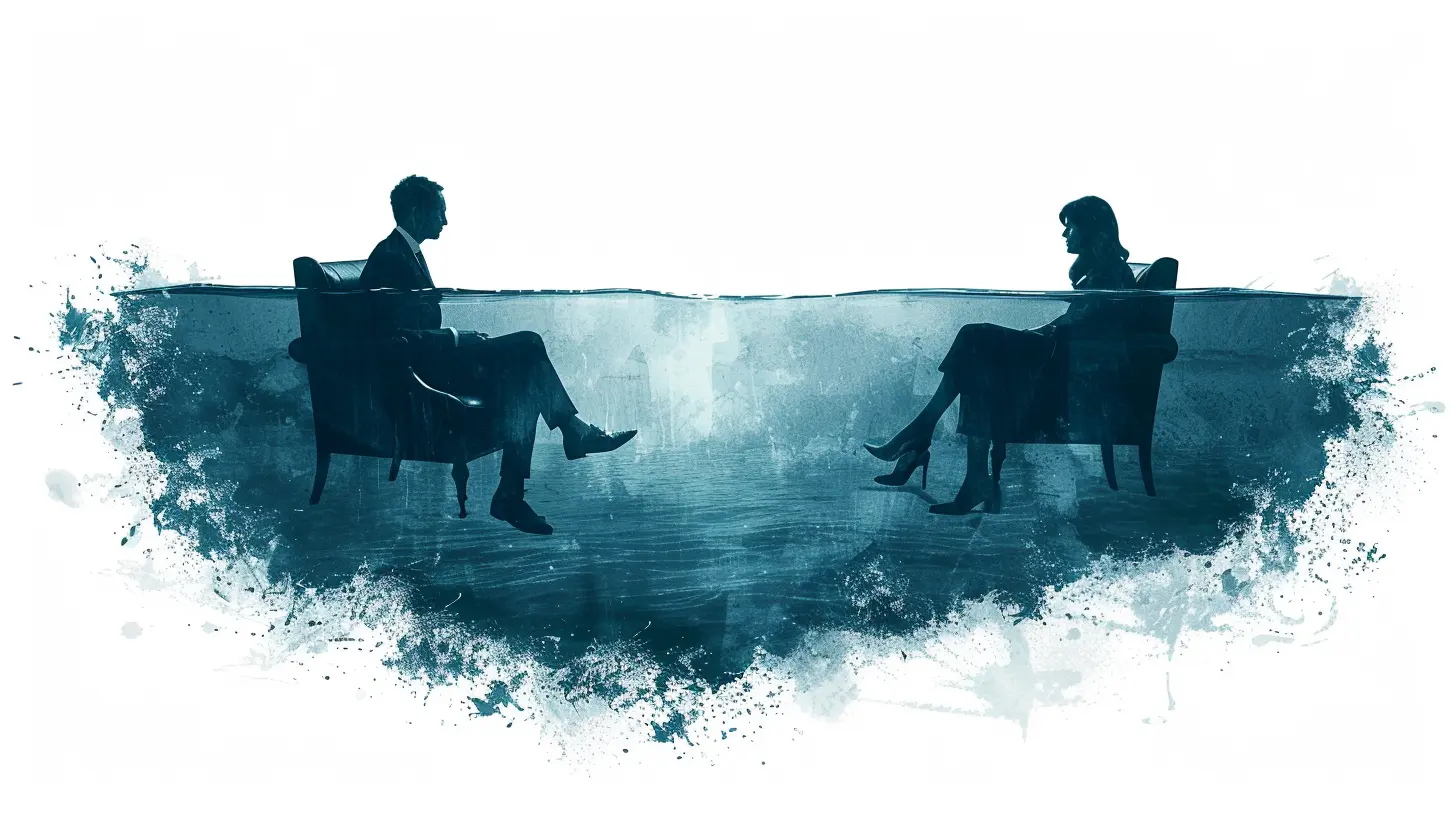Exploring the Therapist-Client Relationship
24 June 2025
When you think about therapy, what pops into your head? A cozy room, a therapist sitting with a notepad, and a client pouring their heart out? That’s the typical picture we get from TV shows and movies. But the truth is, the therapist-client relationship goes way deeper than what we see on screen. There's something incredibly powerful—a bit mysterious, even—about the dynamic that forms between a therapist and their client.
So let’s peel back the curtain and take a closer look at this unique, sometimes fragile, yet potentially life-changing connection. Whether you've been in therapy before or you're just curious, understanding this relationship might just shift your perspective on mental health altogether.

Why This Relationship Matters More Than You Think
Okay, let’s be real. You can have the most experienced therapist in the world, but if there’s no connection? It kind of falls flat.The bond between a therapist and their client—what professionals call the "therapeutic alliance"—is actually one of the strongest predictors of successful therapy. Yep, even more than the type of therapy being used. Weird, right?
Think of it like this: Imagine you're building a bridge between two cliffs—one side is where you're starting (anxiety, trauma, whatever brought you in), and the other is where you want to be (peace, clarity, healing). That bridge? That’s your relationship with your therapist. If it’s shaky or incomplete, you’re not getting across.

The Mystery of Human Connection
Here's the thing: therapy is different for everyone. But one universal truth is that something powerful happens when someone truly listens—without judgment, without an agenda. Just... listens.When a therapist offers that kind of presence, it creates a space for honesty and vulnerability you probably won’t find many other places.
Have you ever noticed how hard it is to be really honest—even with people close to you? We often sugarcoat things, hide the ugly parts, or say what we think others want to hear. But in therapy? You’re invited to bring it all. The mess, the shame, the confusion. And strangely enough, that invitation often builds trust faster than you’d expect.

What Makes This Relationship So Unique?
Let’s break it down. Here are a few things that set the therapist-client relationship apart from others:1. It’s All About You
No offense to your friends and family, but most relationships are a two-way street. You give, they give. You vent, they vent. Fair enough, right?In therapy, though, it’s a one-way street—and that’s by design. The session is 100% about you. Your needs, your thoughts, your healing. That can feel a bit strange at first, especially if you’re used to putting others first. But over time, it becomes incredibly freeing.
2. Boundaries Are Sacred
Ever heard someone call their therapist a "friend"? That’s... kind of crossing a line.Therapists follow strict ethical guidelines. They can’t be your friend, your roommate, or your business partner. That clear separation keeps the relationship safe and focused. You’re not there to help them—and they aren’t there to judge or influence your life outside of therapy. It’s like a container: strong, protected, and sealed shut from the outside chaos.
And weirdly enough? Those boundaries help you feel safe enough to open up.
3. There’s Trust—but it’s Earned
Trust in therapy isn’t automatic. For some, it takes weeks. For others, it might take months. Therapists know this—and they're trained to be patient.But when that trust begins to form? That’s when the real magic happens. You start revealing things you’ve never dared to say out loud. And instead of judgment, you get compassion. That kind of acceptance can be deeply healing, especially if you’ve been burned in other relationships.

Attachment Styles Sneak Their Way In
Here’s something a lot of people don’t realize: how you relate to your therapist often mirrors how you relate to other people in your life.If you grew up in a household where you had to tiptoe around emotions, you might hold back in therapy too. If you’re used to people letting you down, you might expect your therapist to do the same. That’s attachment theory in action.
But here’s the cool part—therapy gives you a chance to rewrite some of those patterns. Through the relationship itself, you can learn new ways of connecting, trusting, and relating. It’s like emotional rehab for your relational muscles.
The Role of Transference (It’s Not as Scary as It Sounds)
Imagine this: You start noticing that you’re reacting to your therapist in a way that feels... familiar. Maybe you’re extra sensitive to their tone, or you feel hurt when they don’t respond how you expected.That’s called transference. It’s when you subconsciously transfer feelings you have about other people (parents, exes, etc.) onto your therapist.
It might feel weird—but it’s actually a goldmine for growth.
Your therapist can help you explore where those reactions are coming from and, more importantly, where they’ve shown up in your other relationships. It’s like therapy within therapy.
And guess what? Therapists experience countertransference too—it’s when they start feeling emotions stirred up by a client that relate to their own stuff. That’s why therapists need therapy too. Yep, it’s a full-circle kind of thing.
When Things Get Rocky
Let’s be honest. Not every therapist-client relationship is smooth sailing. Sometimes personalities clash. Sometimes therapy stagnates. And sometimes, it just doesn’t feel right.If you feel like something’s off? Say something. A good therapist won’t take it personally. In fact, those conversations can strengthen your bond. Think of it like tuning an instrument—small adjustments can create harmony.
And if the fit really isn’t right? It’s okay to look for someone new. Therapy is too important to settle.
The Silent Moments Speak Loudly
Not all therapy breakthroughs happen in words.Sometimes, it’s the pause. The silence after a deep question. The therapist’s warm glance that says, “I see you.” Those tiny moments are often when the real healing starts.
Think about it like this: your brain is doing emotional archaeology, digging through layers and fragments to find something buried. And silence? That’s the brush that gently clears the dust away.
Growth Happens in the Mess
Therapy isn't about having tidy answers. It’s not linear. It’s more like a spiral—you circle around the same issues, slowly getting closer to the core each time.Some days you’ll leave therapy floating on a cloud. Other days, it’ll feel like you just got hit by a truck. That’s normal. Growth is messy. But with a solid therapist-client relationship, you can weather those lows and amplify those highs.
The End of the Road (Or Is It?)
Eventually, therapy ends. Sometimes gradually, sometimes suddenly. And honestly? Ending therapy can feel like a breakup—bittersweet, emotional, sometimes a little scary.But here’s the thing: a strong therapist-client relationship doesn’t just prepare you for the sessions—it prepares you for life. You take the lessons, the insights, and the tools with you. You internalize the voice of compassion, even when your therapist is no longer sitting across from you.
And that? That’s the mark of a successful therapeutic connection. It lingers—in the best way.
A Final Thought
So, what really happens in the therapist-client relationship?It’s not just talking. It’s transforming. It’s two human beings, meeting in a quiet room, doing the brave, messy, noble work of healing. It’s about safety, trust, and learning to feel again—even if it's one session at a time.
If you’ve ever felt like you’re too broken, too complicated, or too far gone—this relationship says otherwise. It says, “You’re worth showing up for.”
And sometimes, that’s all we need to start.
all images in this post were generated using AI tools
Category:
PsychotherapyAuthor:

Matilda Whitley
Discussion
rate this article
2 comments
Octavia Whitley
This article highlights the vital role of the therapist-client relationship in effective therapy. By emphasizing trust, empathy, and open communication, it sheds light on how these factors can significantly enhance the therapeutic experience and foster meaningful personal growth. A must-read for both practitioners and clients!
October 7, 2025 at 2:57 PM

Matilda Whitley
Thank you for your insightful comment! I'm glad you found the article valuable in highlighting the importance of the therapist-client relationship. Your engagement is much appreciated!
Sylph Ramos
A strong therapist-client relationship is crucial for effective therapy outcomes.
July 1, 2025 at 3:05 PM

Matilda Whitley
Absolutely! A strong therapeutic alliance fosters trust, openness, and collaboration, significantly enhancing the effectiveness of therapy.


